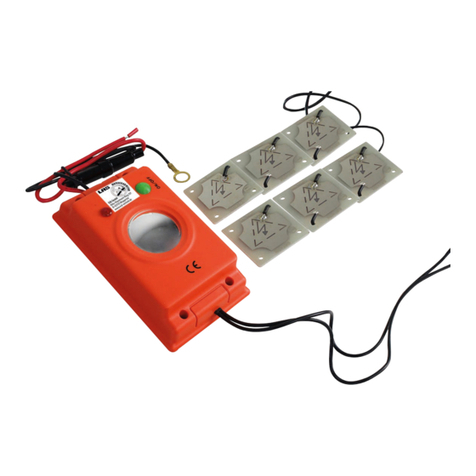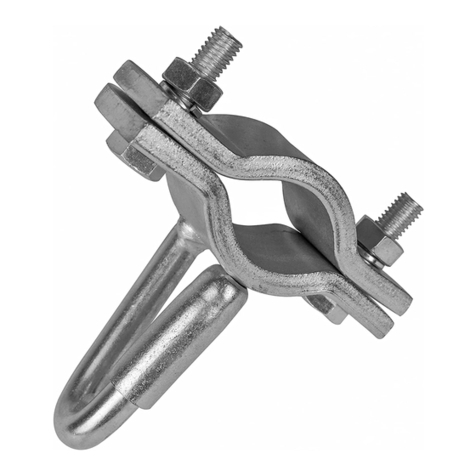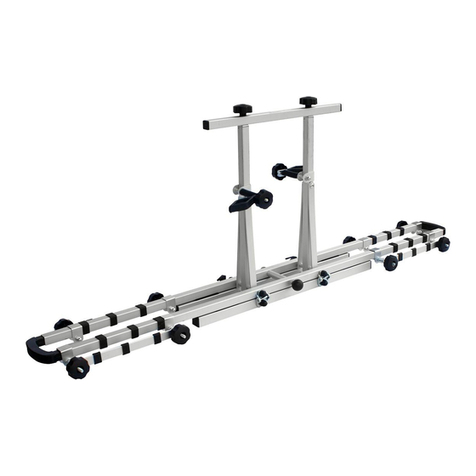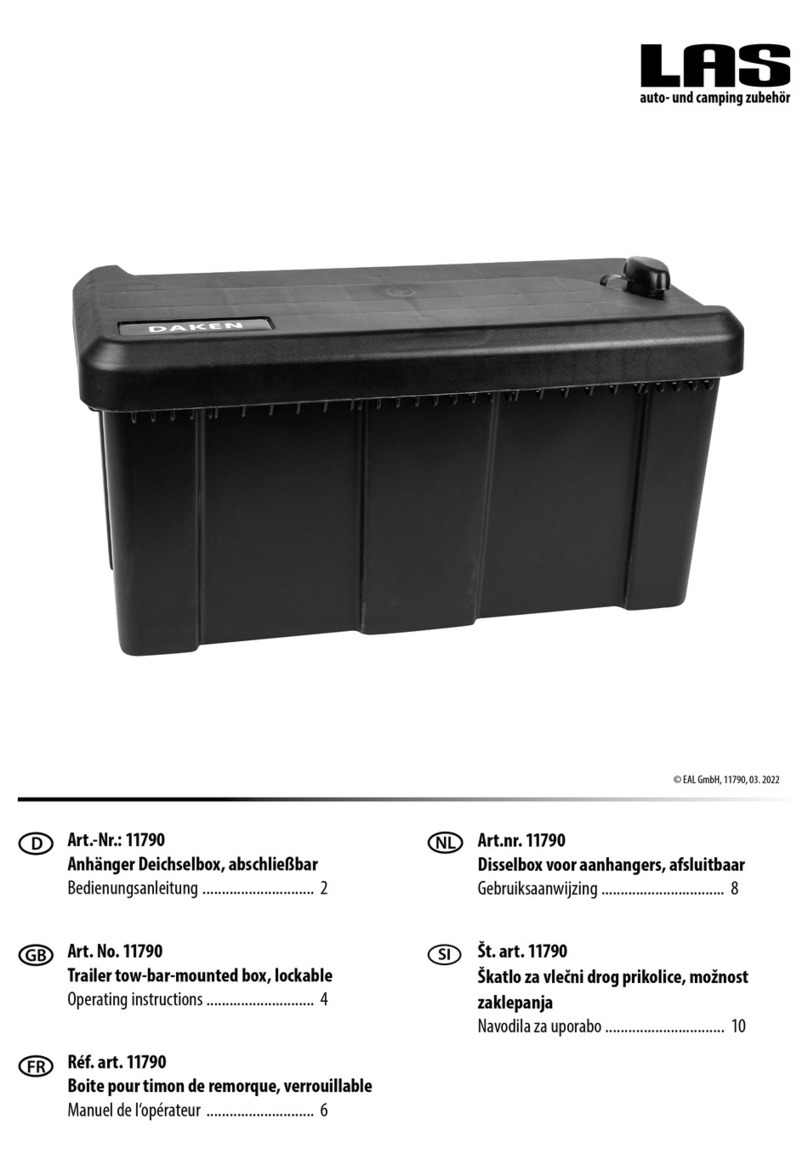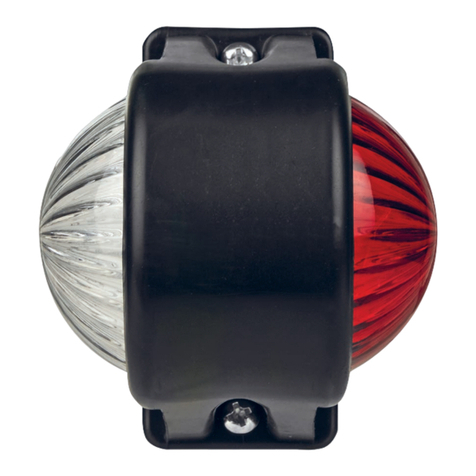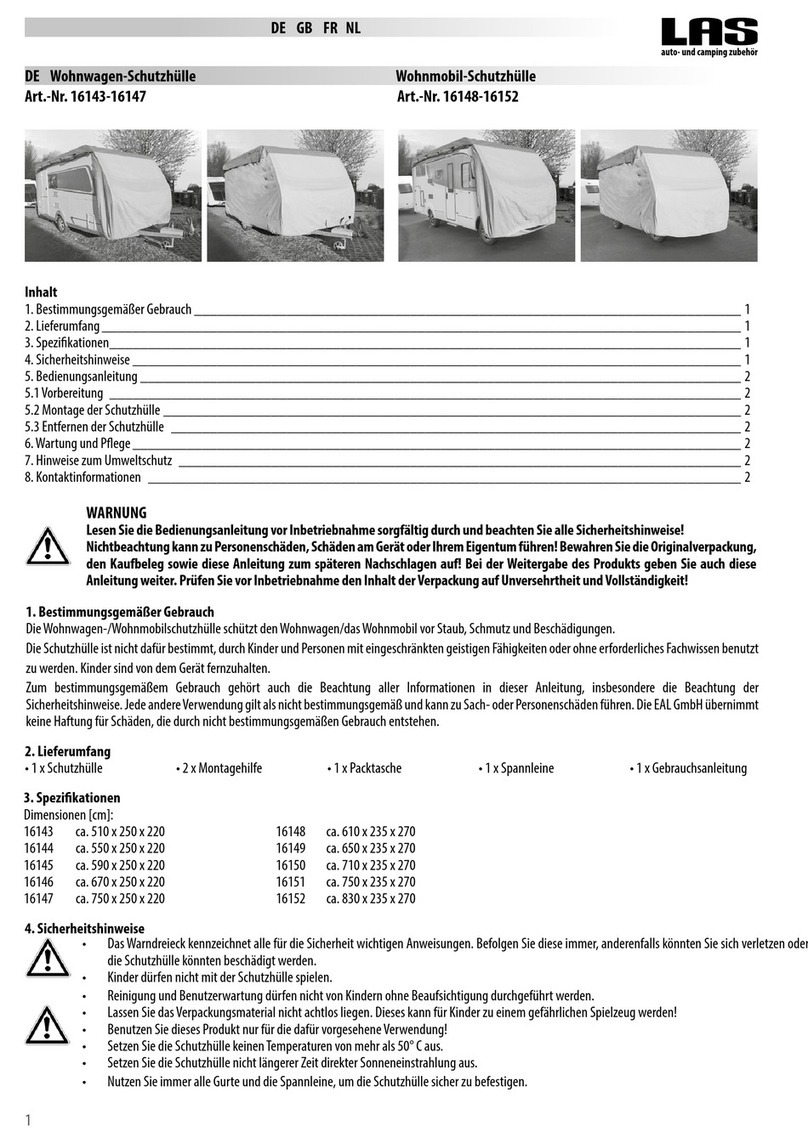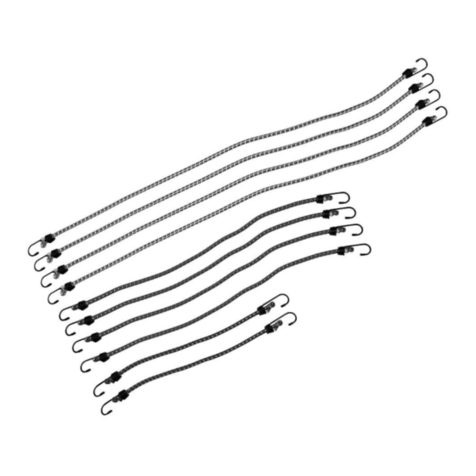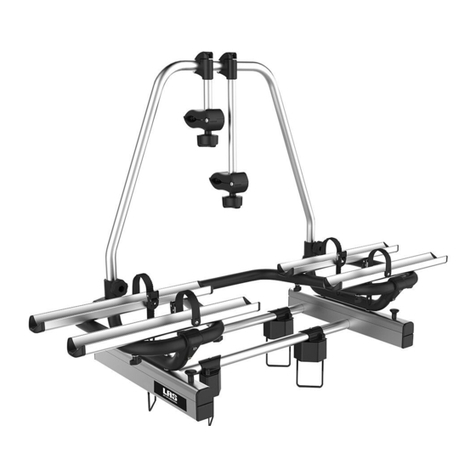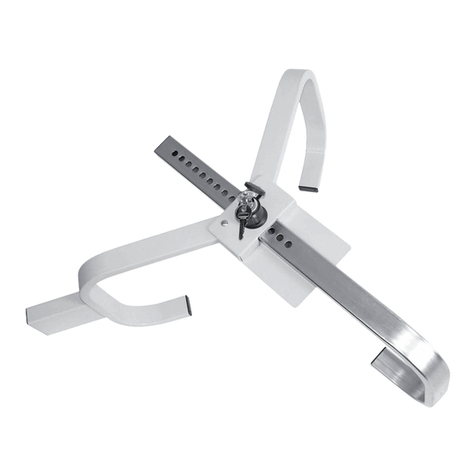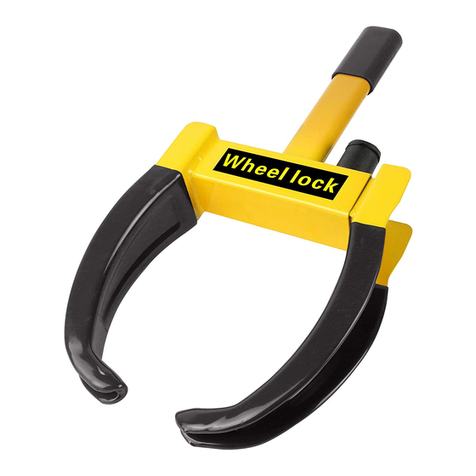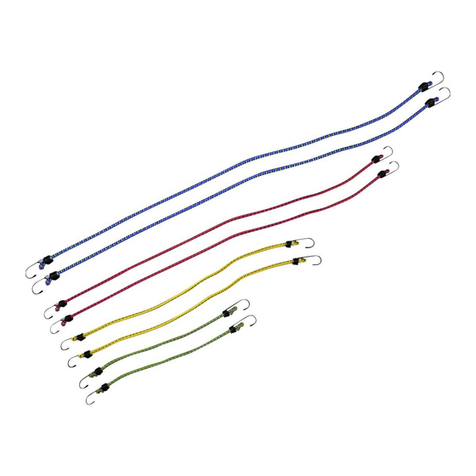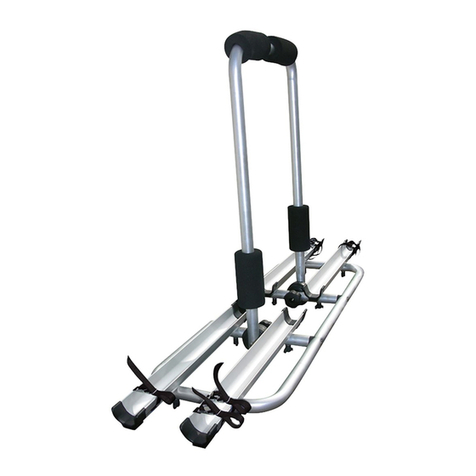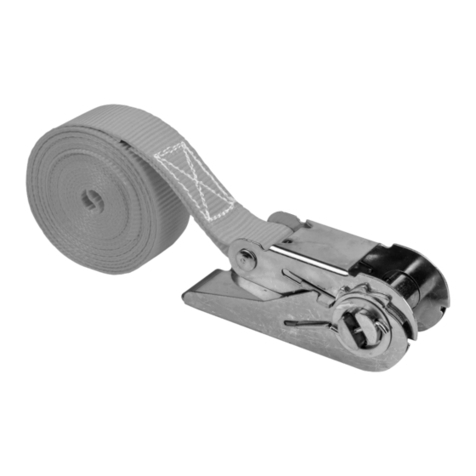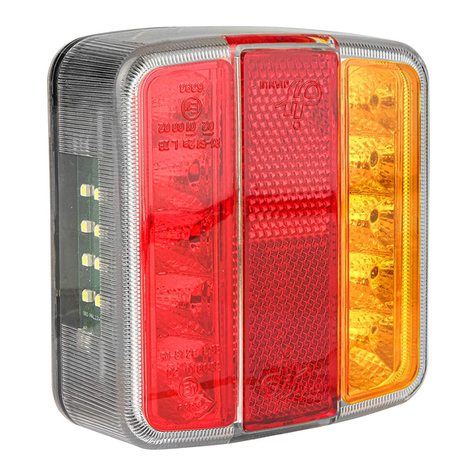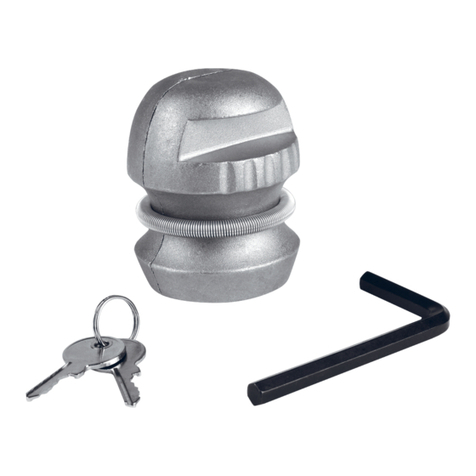Montage der Fahrräder auf dem Fahrradträger
Das erste Fahrrad wird in die erste Fahrradaufnahme (dem Fahrzeug am nächsten)
gestellt. Die Knaufschrauben, der mit Federn versehenen Radklemmen, werden weit
aufgedreht und die Laufräder in die Klemmen gestellt. Dann werden die Knaufschrauben
der Klemmen fest angezogen, um das Rad sicher festzuklemmen. Jetzt wird die
Halteklammer des Rahmenhalters um ein Rahmenrohr des Fahrrades gelegt und die
Knaufschraube des entsprechenden Halters fest angezogen. Das zweite Fahrrad wird in
entgegengesetzter Richtung in die zweite Fahrradaufnahme gestellt und, wie beschrieben,
befestigt. Zum Lieferumfang gehören auch Rahmenhalterklammern für Y oder Oversize-
Rahmen. Gegebenenfalls müssen Sie die Rahmenhalterklammern tauschen, damit eine
sichere Befestigung der Fahrräder gewährleistet ist.
Zusätzlich müssen die Fahrräder unbedingt noch mit dem beiliegenden
Sicherheitsgurt festgezurrt werden. Legen Sie dazu den Sicherheitsgurt um die
Fahrradrahmen und um den Haltebügel herum und ziehen ihn fest an.
Abklappen des Fahrradträgers:
Ziehen Sie den Sicherungsbolzen, der sich in der Mitte des Fahrradträgers befindet, nach
außen und klappen den Träger nach vorn. Um Beschädigungen an Ihren Fahrrädern oder
Ihrem Fahrzeug zu vermeiden, halten Sie dabei entweder den Träger oder die Fahrräder
gut fest, und neigen Sie die Last sanft nach vorne. Durch das Anheben des Trägertisches
und der Fahrräder wird der Träger wieder in seine normale Betriebsposition gebracht. Der
Träger muß nun wieder mit dem Sicherungsbolzen gesichert werden. Dazu wird der mit
einer Feder versehene Bolzen zunächst etwas herausgezogen, der Träger klappt jetzt in
seine endgültige Position, und dann losgelassen.
Prüfen Sie unbedingt, ob der Bolzen sicher in seiner Führung eingerastet ist, und
der Klappmechanismus blockiert ist!
Wartung und Pflege
- Den Fahrradträger nach Verwendung sauber und trocken lagern. Eventuell Schlamm
und anderen Schmutz mit Wasser abwaschen.
- Kontrollieren Sie den Fahrradträger regelmäßig auf Beschädigungen. Beschädigte oder
verschlissene Teile sind sofort zu ersetzen. Es dürfen nur Originalersatzteile verwendet
werden.
- Bolzen und Muttern des Fahrradträgers regelmäßig kontrollieren und wenn notwendig
nachziehen.
- Lackschichtbeschädigungen sofort mit Farbe behandeln.
- Drehbare und bewegliche Teile regelmäßig schmieren.
Hinweise zum Umweltschutz
Bitte entsorgen Sie dieses Gerät über die Wertstofftonne oder die
öffentlichen/kommunalen Sammelstellen.
Die Materialien sind recycelbar. Durch Recycling, stoffliche Verwertung oder andere
Formen der Wiederverwendung von Altgeräten leisten Sie einen wichtigen Beitrag zum
Schutz unserer Umwelt!
Kontaktinformationen
EAL GmbH
Otto-Hausmann-Ring 107
42115 Wuppertal
Deutschland
Telefon: +49 (0)202 42 92 83 0
Telefax: +49 (0)202 2 65 57 98
Internet: www.eal-vertrieb.de
E-Mail: info@eal-vertrieb.com






